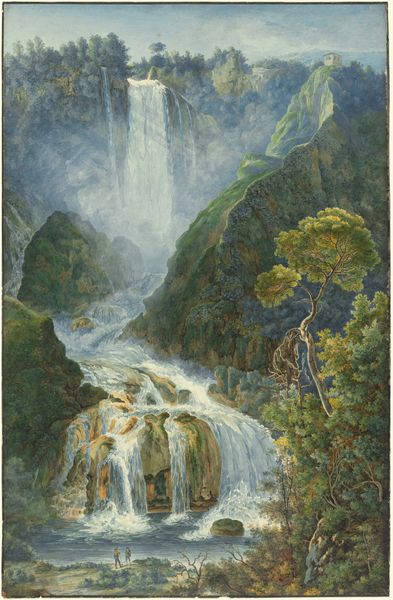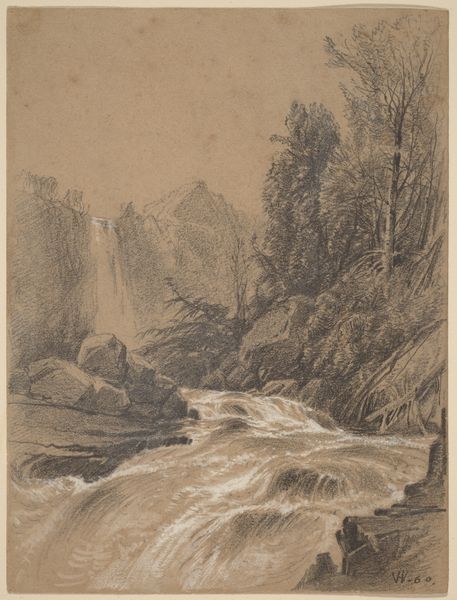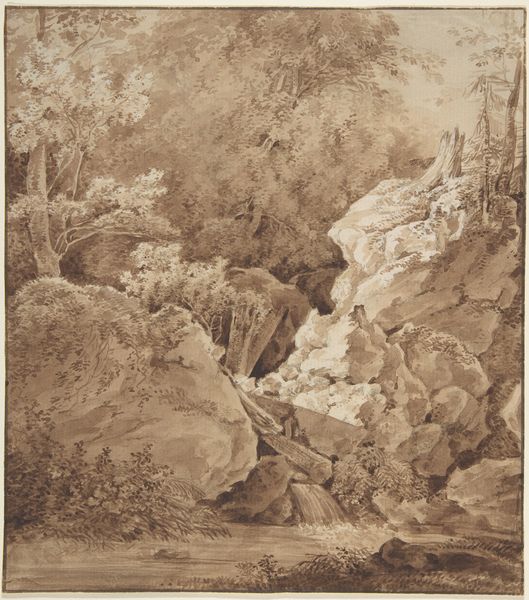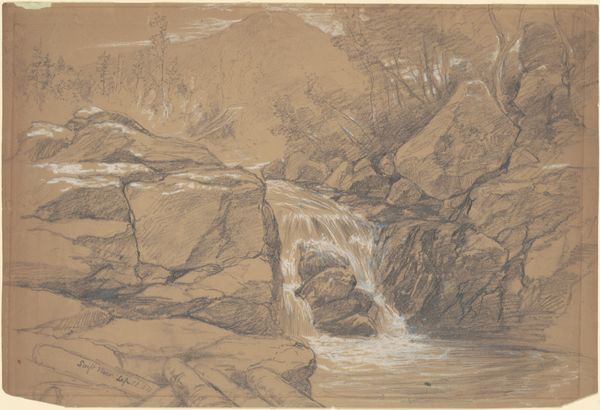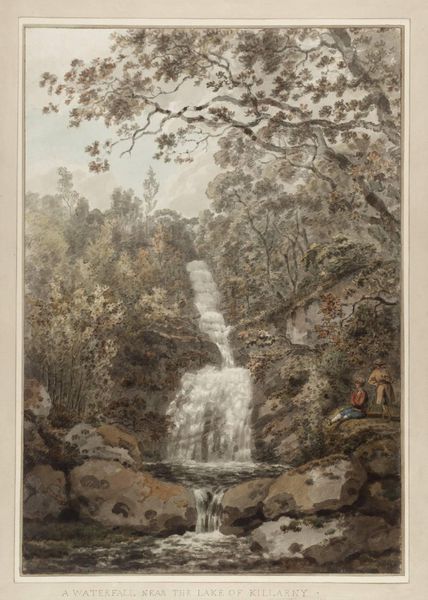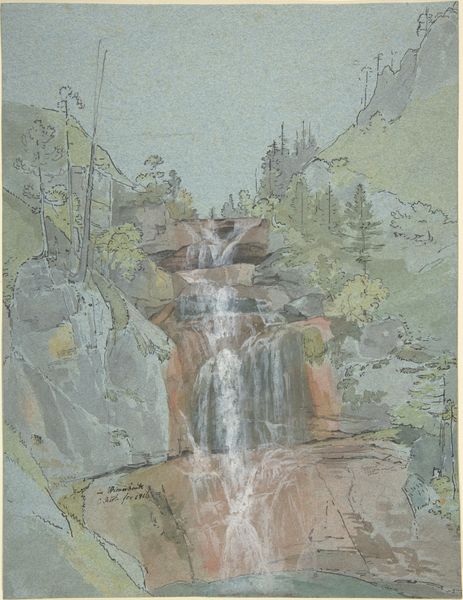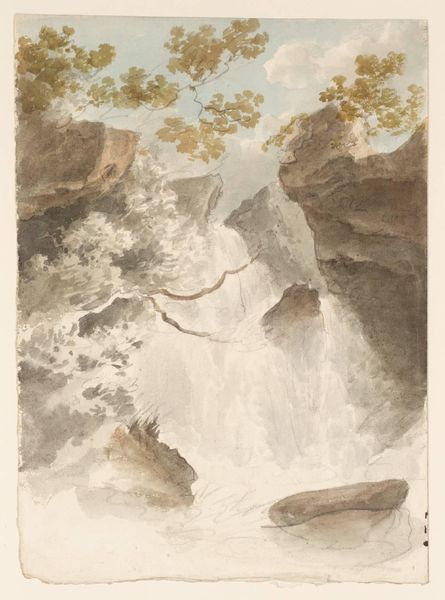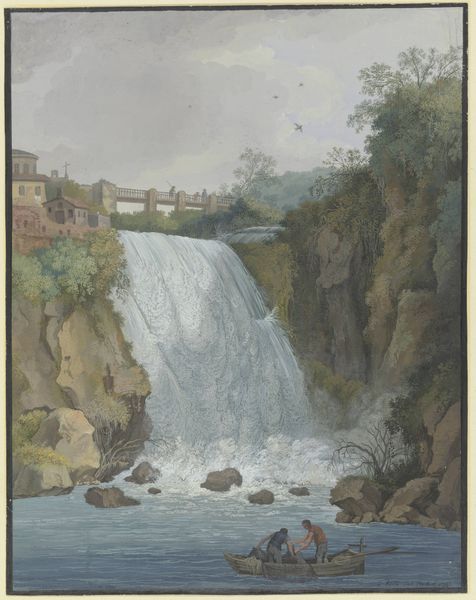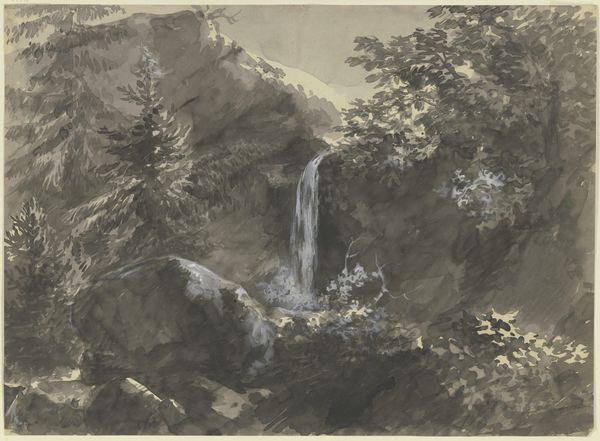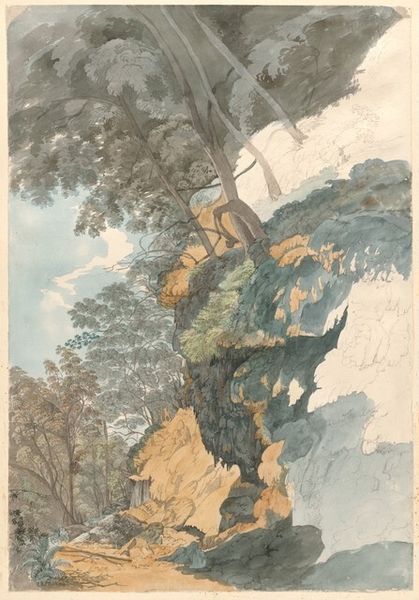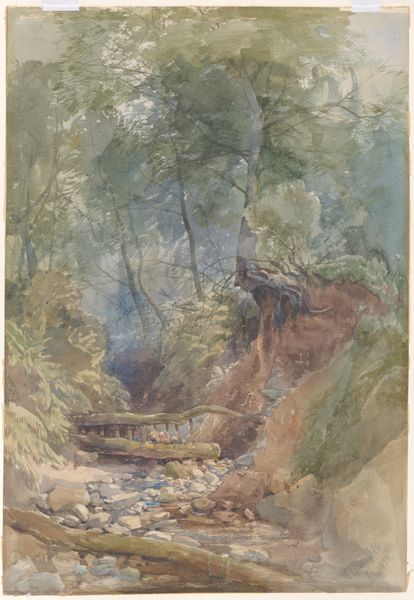
A Waterfall in a Forest at Langhennersdorf 1753 - 1806
0:00
0:00
drawing, print
#
tree
#
drawing
#
germany
# print
#
impressionist painting style
#
waterfall
#
possibly oil pastel
#
oil painting
#
forest
#
earthy tone
#
underpainting
#
water
#
painting painterly
#
watercolour illustration
#
mixed medium
#
watercolor
#
warm toned green
Dimensions: sheet: 9 5/16 x 7 7/16 in. (23.7 x 18.9 cm)
Copyright: Public Domain
Christoph Nathe made this watercolor of a waterfall in Langhennersdorf, Germany, sometime in the late 18th or early 19th century. During this period, the concept of the ‘sublime’ was gaining prominence in artistic and intellectual circles. The sublime was all about experiencing awe and terror in the face of nature’s overwhelming power. Nathe’s watercolor participates in this cultural phenomenon. Look at how he’s framed the waterfall with jagged rocks and dense forest. The overall effect is one of nature untamed, indifferent to human concerns. Waterfalls, in particular, became a popular motif because they embodied both beauty and danger. To fully understand Nathe’s artistic choices, we might look at the popular literature and travelogues of his time. These texts can tell us a lot about how people were learning to see and appreciate the natural world. Ultimately, this artwork reminds us that our understanding of nature is always mediated by cultural and institutional forces.
Comments
No comments
Be the first to comment and join the conversation on the ultimate creative platform.
